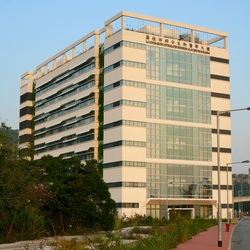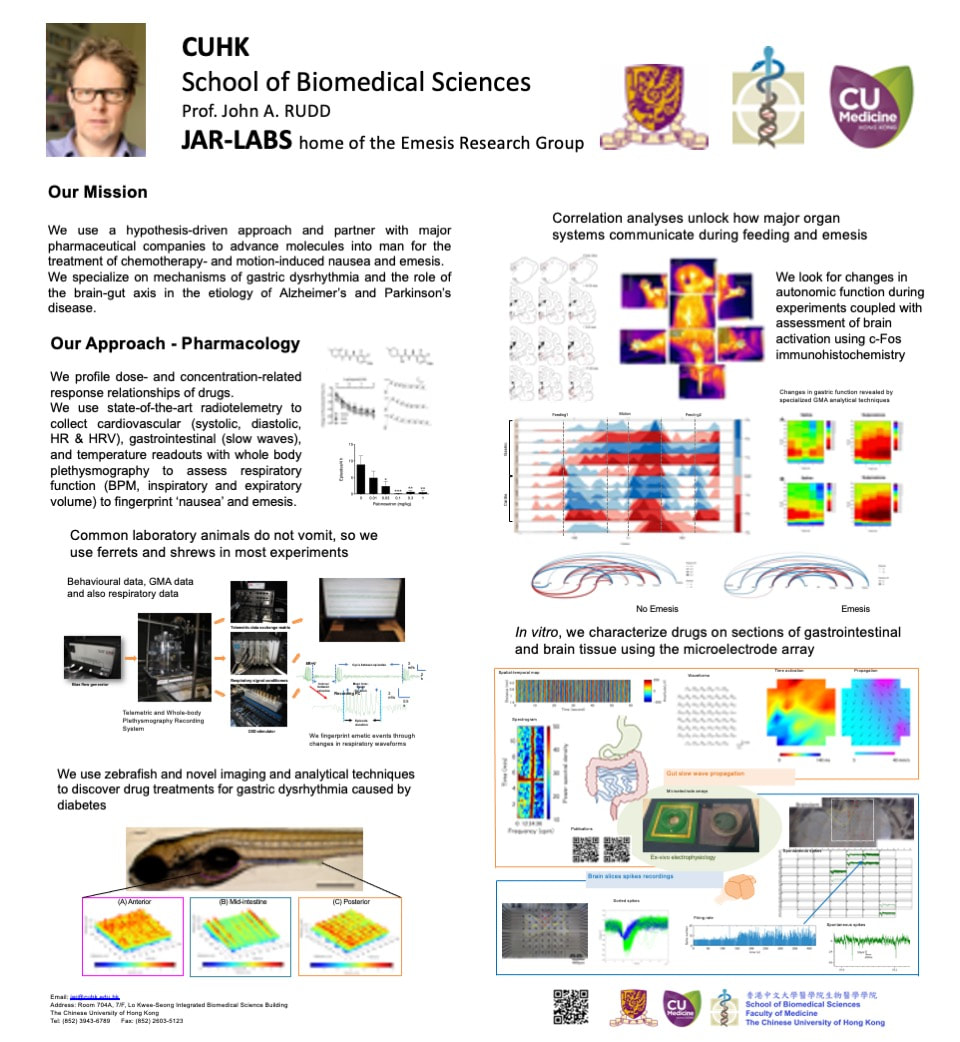Current GRF Funding
- Action of Ghrelin to Prevent Chemotherapy-Induced Side Effects in Suncus murinus
- Contribution of Disrupted Gastrointestinal Myoelectric Activity to Mechanisms of Cisplatin-Induced Acute and Delayed Nausea and Emesis
- Novel Mechanisms Involved in Motion Sickness
|
Research Impact Case broadcasted on TVB (2020) |
ABI Seminar (2022)
|
School of Biomedical Sciences

The School of Biomedical Sciences was formed in June, 2009 from the amalgamation of staff from the Departments of Anatomy, Biochemistry, Physiology and Pharmacology.
- Our group belongs to the new Cancer Biology and Experimental Therapeutics Theme, with an older affiliation to the Neuro-degeneration, -development and Repair Theme.
- We are located in a purpose-built facility on the main campus of the Chinese University of Hong Kong (CUHK).
- In addition to an interest in drug discovery, I also teach the mechanism of action of drugs in disease to medicine and pharmacy students enrolled at CUHK.
- I also have a number of administrative roles within the University including being the Director of the Laboratory Animal Services Centre, overseeing a staff of more than 60 people to provide animal-related services for the entire university and Hong Kong.
- Click here for more information.

